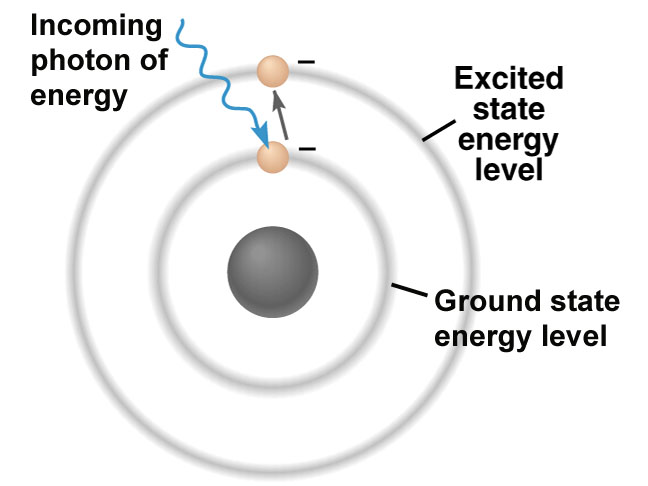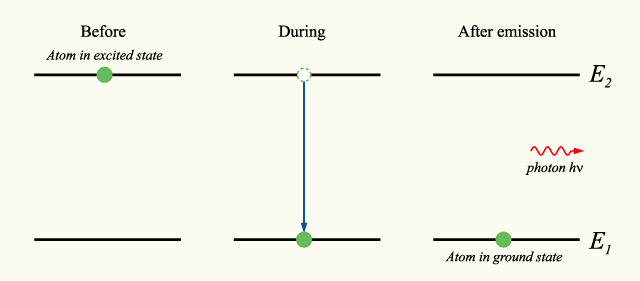How lasers work?
“Laser” is an acronym for light amplification by stimulated emission of radiation.
To understand how a laser works you first need to know that electrons sit at various orbits with energy bands within an atom. You can think of these bands as individual steps on a staircase; maybe you have one in your house.
In their default state, all electrons sit on the first step of this staircase, which is considered the electron’s ground state. If you then zap the right amount of energy into an electron, you can get it move up a step. This process is called absorption, where the electron absorbs the energy shot into it, and in the process, its energy level is elevated to the next step or band.
Here we can see two energy band gaps within an atom that electrons can move between.
In this higher energy state, the electron is considered to be excited, but also unbalanced. To restore balance, the electron releases the original bit of energy that it absorbed in the form of a photon, or particle of light. This release of energy is called spontaneous emission. Here, the electron loses the energy that is initially gained and steps back down to the first step on our flight of stairs.
Through spontaneous emission, an electron loses energy and releases a photon.
We can see atoms doing this spontaneous emission dance all around us, going from states of ground to excitement and back to ground in a variety of applications. Take for example your toaster oven. The coils burn bright red because atoms are excited by heat, and in the process release red photons. This same process happens in fluorescent lights, computer screens, etc.
Thanks for your reading, Hope this article can help you.
Any question, pls feel free to contact us. sale12@ruijielaser.cc Miss Anne.
Post time: Dec-21-2018



